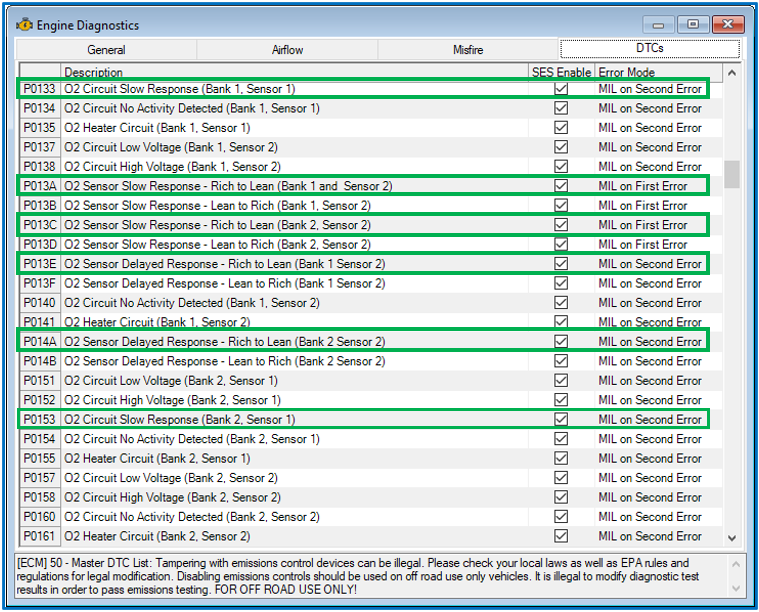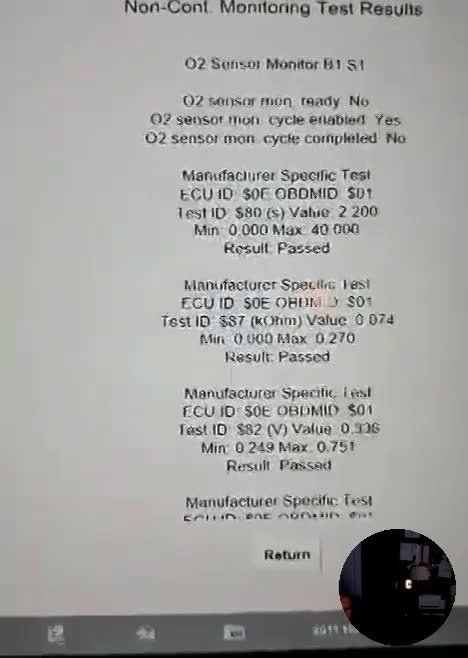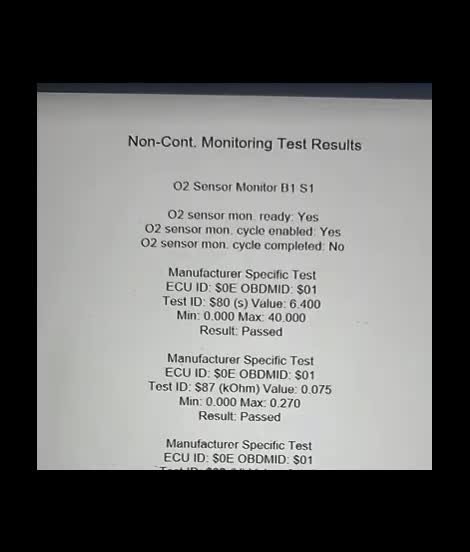Handling Incomplete Readiness Flags and Monitor Tests
This section will cover the following topics:
- Define the differences between a readiness flag and a monitor test.
- Present a driver-seat diagnostic plan for handling incomplete readiness flags for non-continuous monitor tests!
- Define In-Use Monitor Performance Tracking (IUMPT) Numerator (Completions), Denominator (Conditions), and Numerator/Denominator Ratio.
- Develop an understanding of how GLOBAL OBDII MODES, MODE $09 & MODE $06, can be used to identify why a Readiness Flag won’t Flip to Complete.
- Discuss a variety of Case Studies applying the techniques covered in this workshop.
What is the difference between a readiness flag and a monitor test?
A Readiness Flag is used to report that a specific emission-related system has completed testing. Each readiness flag can consist of one or multiple individual monitor tests. State emissions programs use some readiness flags as part of an official Inspection, and a minimum number of readiness flags must be Completed to pass the Inspection.
Non-continuous readiness flags can only flip to complete “Once Per Trip” when the enable criteria are met for the following:
- Catalyst(s)
- Oxygen & Air Fuel Sensor(s)
- Heated Oxygen & Air Fuel Sensor(s)
- EGR and VVT
- Evaporative Emissions
- Secondary Air Injection
A system-specific Monitor test can set a Diagnostic Trouble Code (DTC). It should not be associated with only readiness flag status because every DTC has a related monitor test used to pass or fail a system or component. A monitor test applies to both non-continuous and continuous monitor testing.
The following capture shows a non-continuous monitor test will run once per trip if passing. If the marginal or failing, the ECM will run the test multiple times during the same trip. So, non-continuous readiness flag tests can only be completed once per trip, but the monitor test can run multiple times if failing.
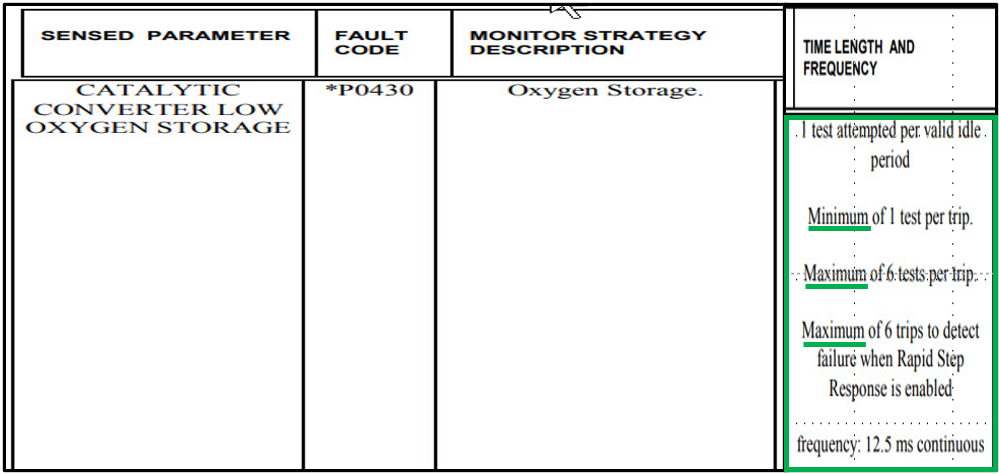
The following plan is a driver-seat diagnostic approach to handling incomplete readiness flags for non-continuous monitor tests.
The most common response for a technician preparing the vehicle for an emissions inspection is I can't get the monitors to run. The better response should be, I can't get the ............flag to complete. Once the technician understands this, an organized driver-seat systematic approach is needed.
Here is a plan to help organize that systematic approach. The chart can be used on almost all OBD II vehicles. The box below for In-Use Monitor Performance Tracking (IUMPT) provides a history to identify a problematic readiness flag. This should be considered when quoting a price to run and set one or more readiness flags.
As you move through this chart, note the vehicle's year and how many readiness flags are set to Not Complete.
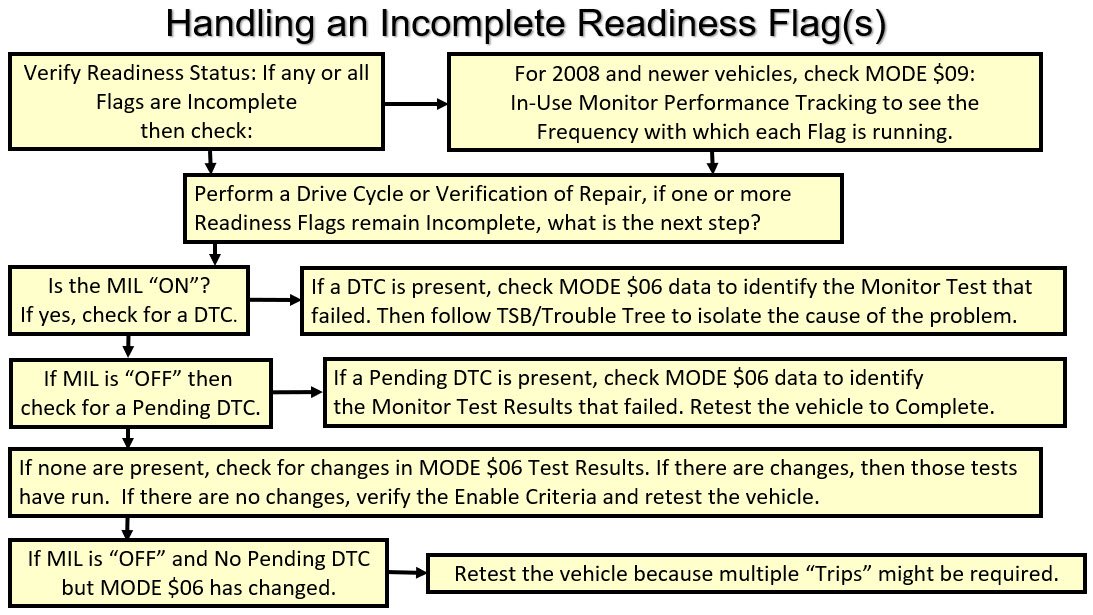
Begin by verifying the readiness flag status in MODE $01 for Monitors Since DTCs Last Cleared. The following capture is a red flag that Modified Software was installed because all readiness flags have been disabled and reported as unsupported. This vehicle has most likely been tuned with an aftermarket tuner, and the readiness flags have been disabled.
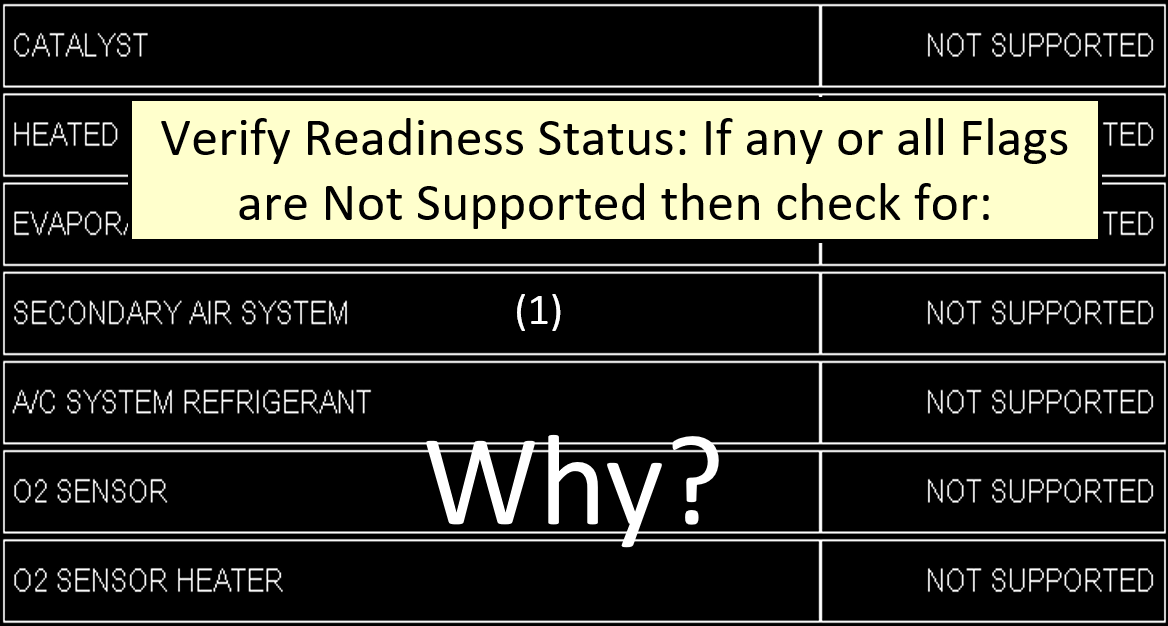
The following capture could have occurred because the memory cleared, the vehicle had been driven such that no enable criteria were met, and more driving was required. It could also be the battery died, the Keep-Alive Memory to the ECM lost power was removed, or the ECM was reprogrammed.
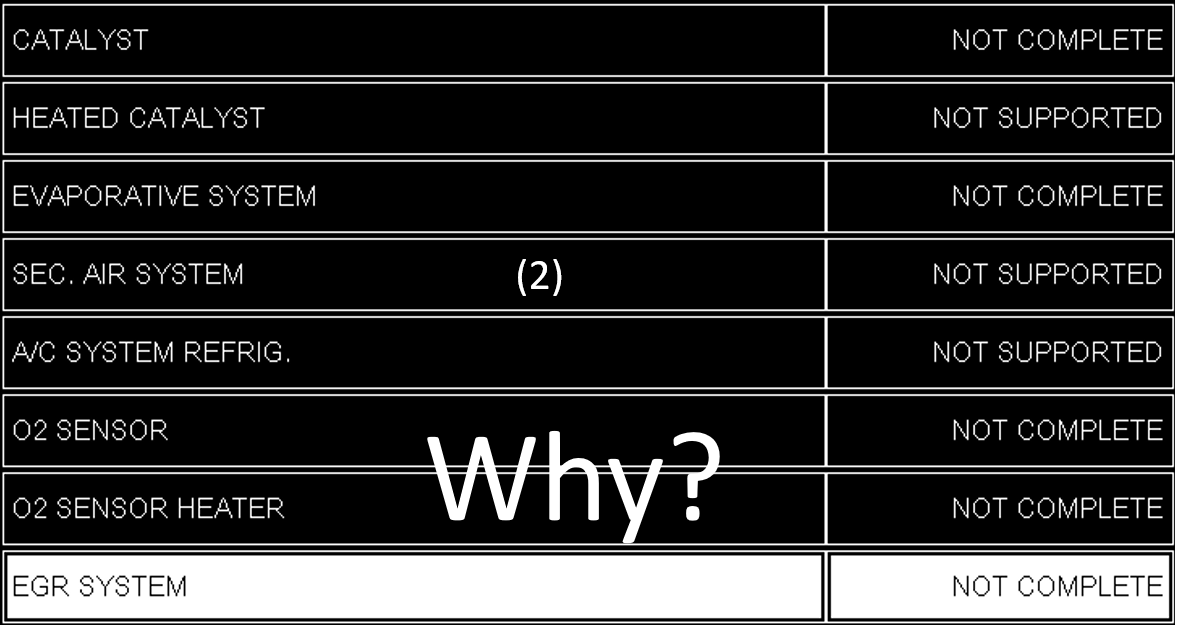
This indicates another approach is required because the O2 Sensor is the only readiness flag needed to pass the Smog Inspection. This could pose a problem and cost time and money.
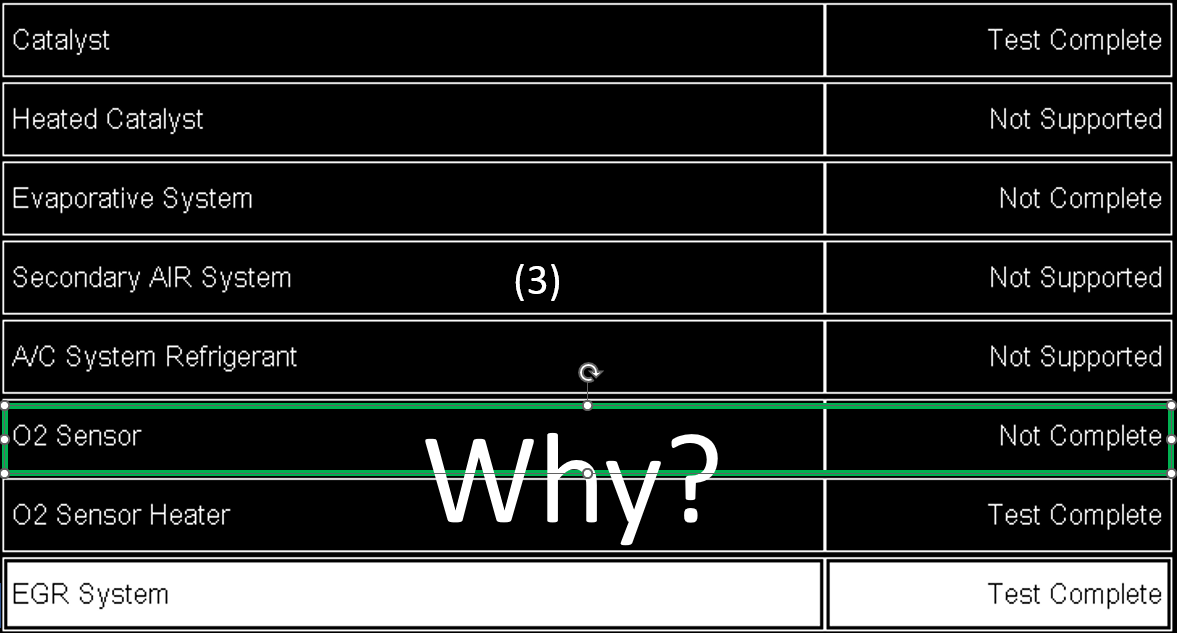
The following will define In-Use Monitor Performance Tracking Completions, Conditions, and Ratios.
For CAN “C” equipped vehicles, check MODE $09, In-Use Monitor Performance Tracking (IUMPT), to see the frequency with which each readiness flag runs. This information might be found on some 2007 model-year vehicles with ISO 9141 and J1850 protocols. IUMPT can provide valuable information about the success rate for setting each readiness flag.
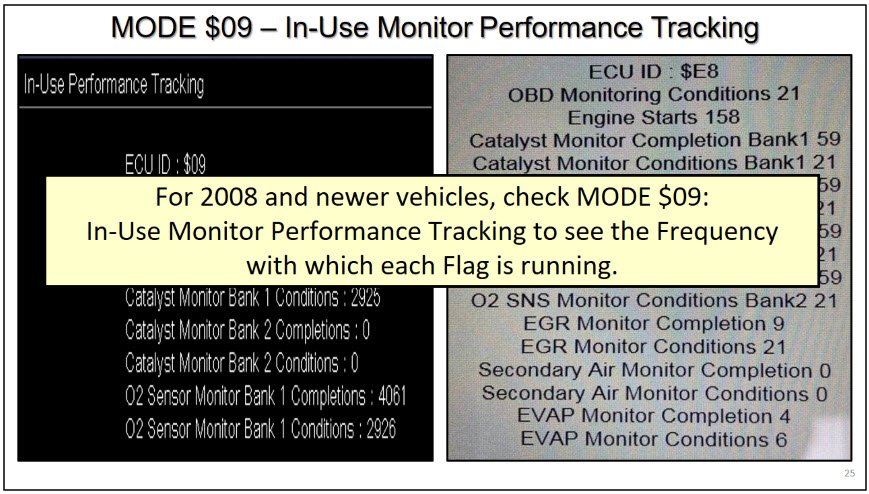
The word Numerator identifies the Completions. It represents the actual monitoring events where the OEM enable criteria ran long enough that a malfunctioning component or system would have been detected. Regardless, if the readiness flag Passes or Fails, the Numerator will be incremented. The Numerator alone does not indicate the chances of completing a readiness flag or flags.
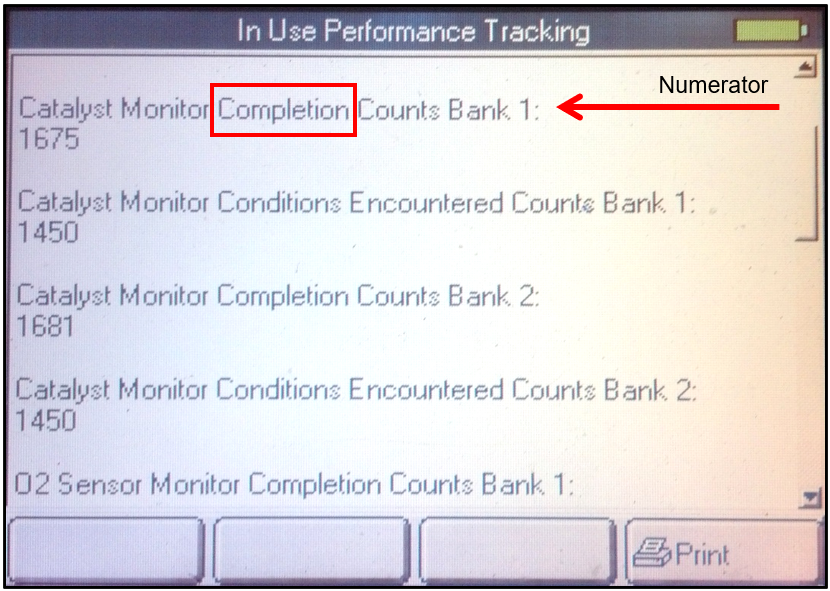
The word Denominator identifies the Conditions. It represents the number of times the manufacturer has met the CARB criteria and been charged with a trip. Meeting CARB criteria establishes a charged trip against the manufacturer. Understand that the Denominator is a measure of vehicle driving activity; it is not a measure of actual monitoring opportunities. The Denominator alone does not indicate the chances of completing a readiness flag or flags.
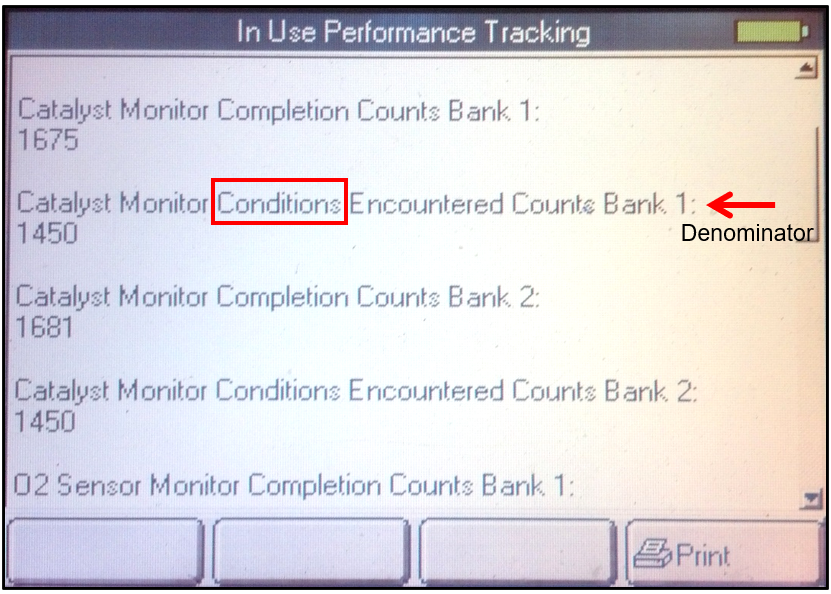
Knowing the Completions and Conditions creates an In-Use Monitor Performance Track Ratio (IUMPR). This ratio allows CARB to track the frequency of a readiness flag monitor test that runs long enough to detect a failing component or system. Understanding this ratio can be invaluable for the technician when identifying difficult-to-complete readiness flags.
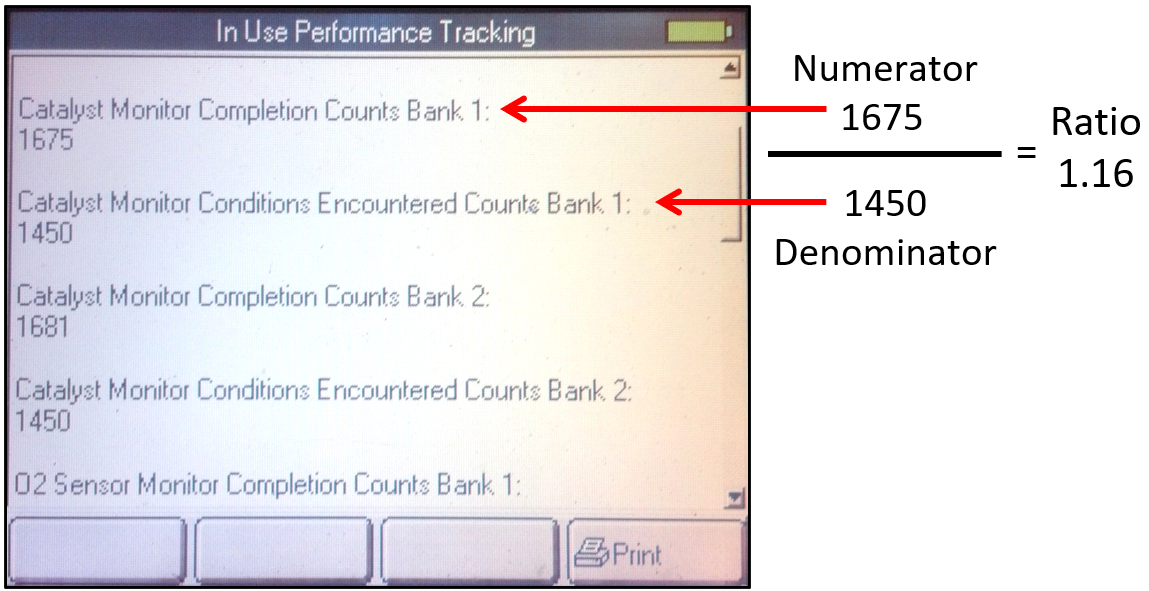
CARB established the below minimum in-use ratios for 2010 and newer vehicles. During the phase-in years of 2007-2009, the In-Use Monitor Performance Ratio (IUMPR) requirements were 0.100 for all tracked readiness flags. These are the minimum acceptable ratios established by CARB but unacceptable for the technician. The ratio displayed in MODE $09 on the vehicle gives the technician an idea of the chances of completing a readiness flag or flags.
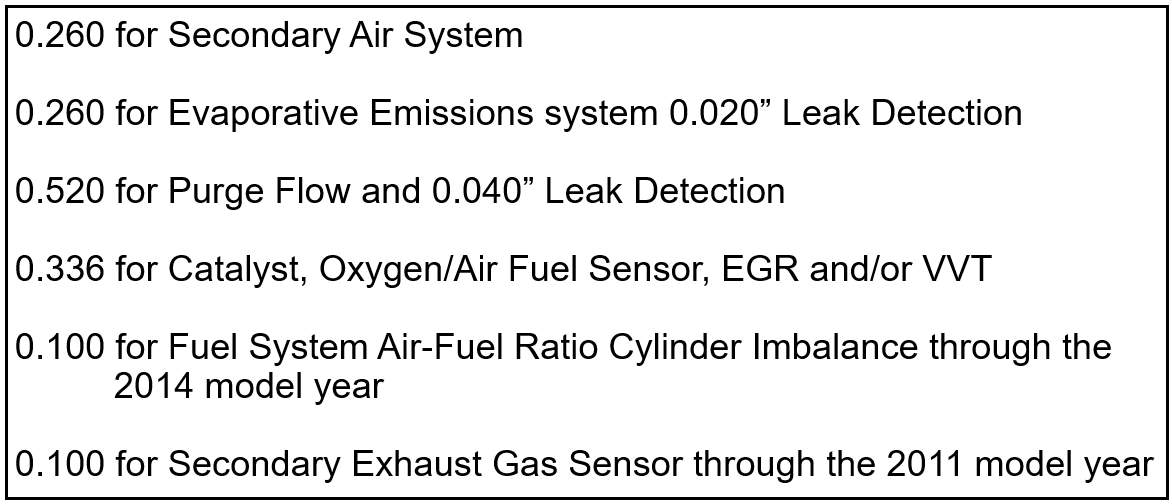
The following capture is from a vehicle equipped with a 0.040” EVAP leak detection monitor test. The minimum CARB ratio for a 0.040” EVAP leak detection monitor test is .520 (0.40” Leak). This particular vehicle is well below the minimum acceptable ratio.
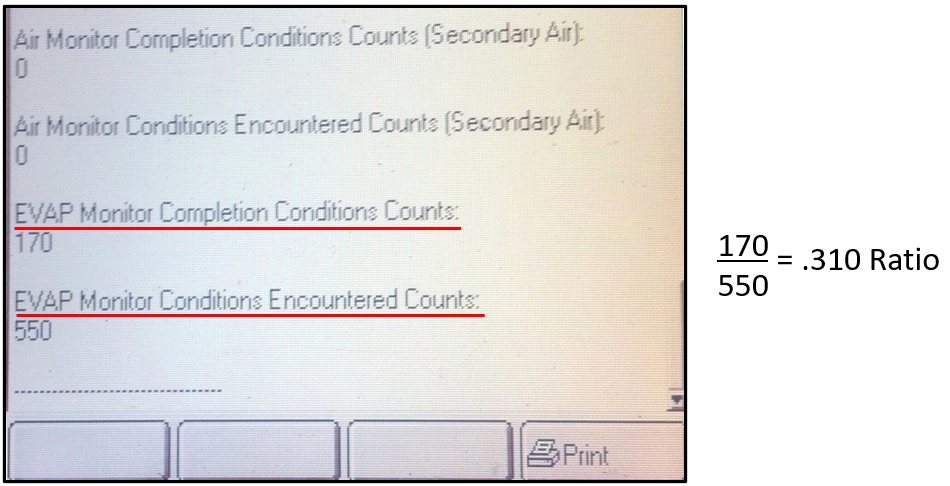
What is the Definition of a CARB Denominator Trip?
The Catalyst, O2 Sensors, EGR, and VVT Denominators should be incremented only on trips that meet the following CARB Criteria:
- The total Propulsion time for the current trip is >/= 10 minutes,
- Total run time above 25mph during the current trip is >/= 5 mins,
- One continuous idle during the current trip is >/= 30 seconds,
- The elevation is < 8000 feet,
- Ambient Temperature is > 20⁰ F.
- Hybrid vehicles, cumulative fueled engine operation >= 10 s
Additional Monitor-Specific CARB Criteria:
- Secondary AIR also requires a 10-second commanded “ON” signal.
- Honda/Acura i-VTEC without EGR: requires both a mid-range (4500 Rpm) and full-range (>6200) commanded "ON" signal.
- At startup, EVAP requires ECT and IAT temperatures to be within approximately 10°F of each other. The ECT temperature must be between 40°- 95°F.
- If the above conditions are not met, then a CARB Trip is not charged against the manufacturer.
The CARB Trip is comprised of three tests:
- Total Propulsion Time =10 minutes.
- One continuous 30-second idle.
- 5 minutes of accumulated drive time above 25mph.
Only one CARB trip per readiness flag can occur per key cycle!
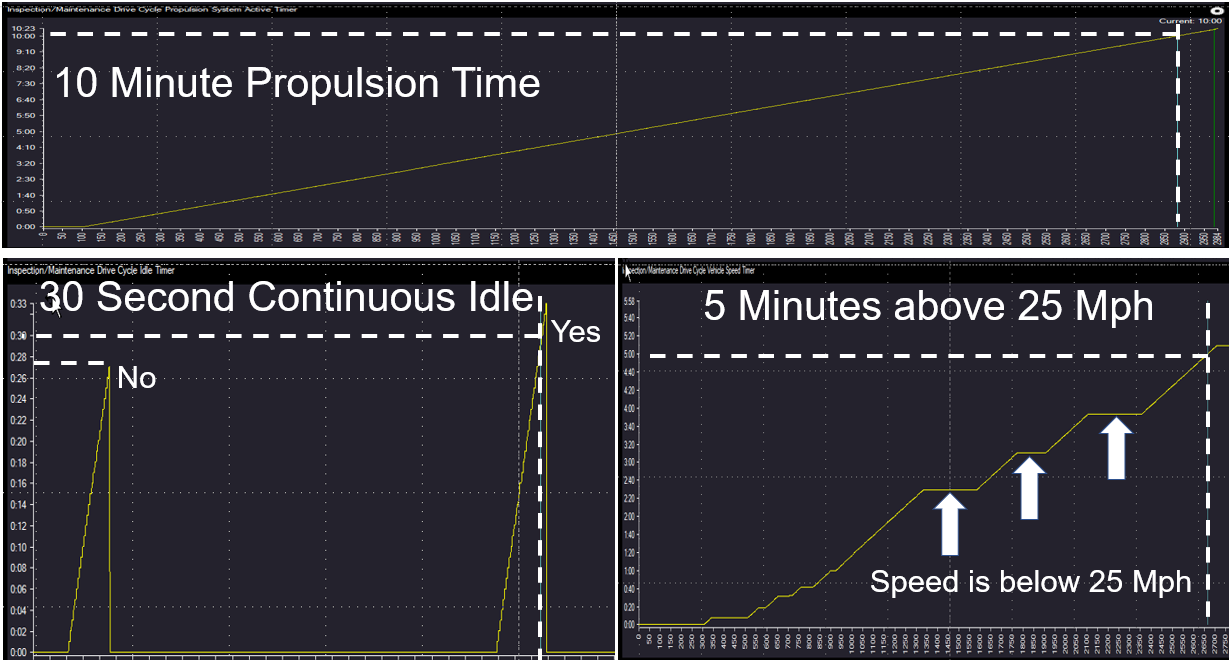
The following capture shows In-Use Monitor Performance Tracking data. The OBD Monitoring Conditions 745 matches the Catalyst, O2 Sensor, EGR/VVT, and Secondary O2 Sensor conditions. While this will not always be the case, they will typically be close.
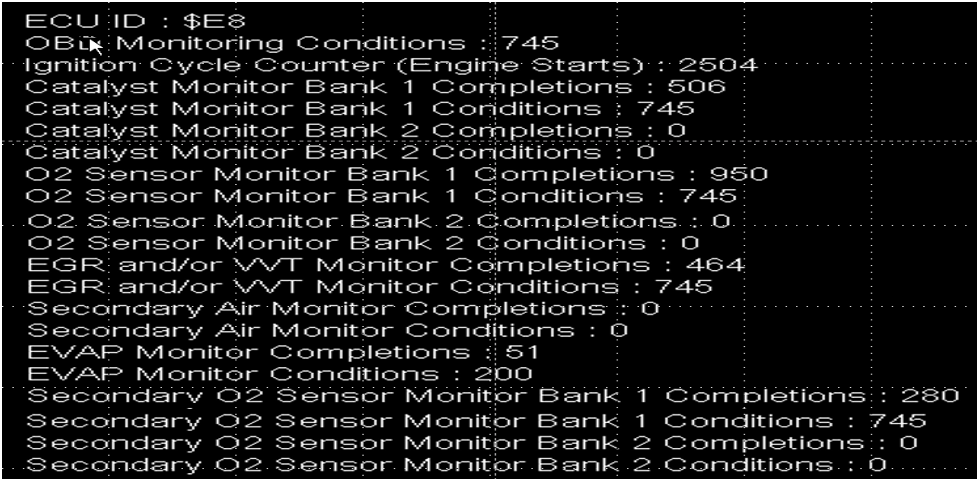
One readiness flag is not shown in the previous capture; the O2 Heater is omitted. Why not? CARB does not see it as that critical because it is not calibrated to an emission threshold (like a heater performance fault before emissions exceed 1.5x standards); it is just a functional check: is the heater working or not working?
In the following capture, note that the Numerators and Denominators incremented for the Catalyst, O2 Sensors, and EGR/VVT. Assuming all monitor tests have passed, it is safe if no DTC is present. This shows what happens when an OEM and CARB trip is complete in the same key cycle. The EVAP numerator and denominator remained unchanged, indicating they did not meet the OEM or CARB trip definition.
Note: IUMPT will not increment until the key is turned off long enough to end the previous trip; it will update at the next key-on cycle.
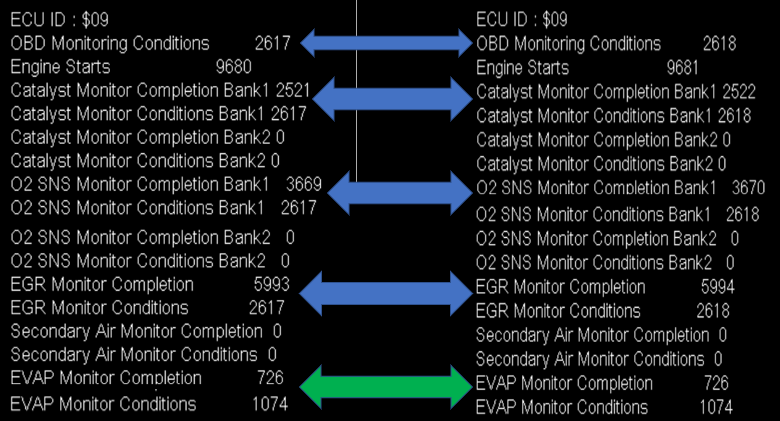 The vehicle in the following capture was equipped with a Key-Off EVAP system. After the key was turned off and the vehicle sat long enough to allow the Key-Off EVAP monitor tests to run and increment the Completions during an OEM trip that did not meet the criteria for a CARB trip. The manufacturer was not charged for a CARB trip, so the Numerator Increased without the Denominator Increasing.
The vehicle in the following capture was equipped with a Key-Off EVAP system. After the key was turned off and the vehicle sat long enough to allow the Key-Off EVAP monitor tests to run and increment the Completions during an OEM trip that did not meet the criteria for a CARB trip. The manufacturer was not charged for a CARB trip, so the Numerator Increased without the Denominator Increasing.
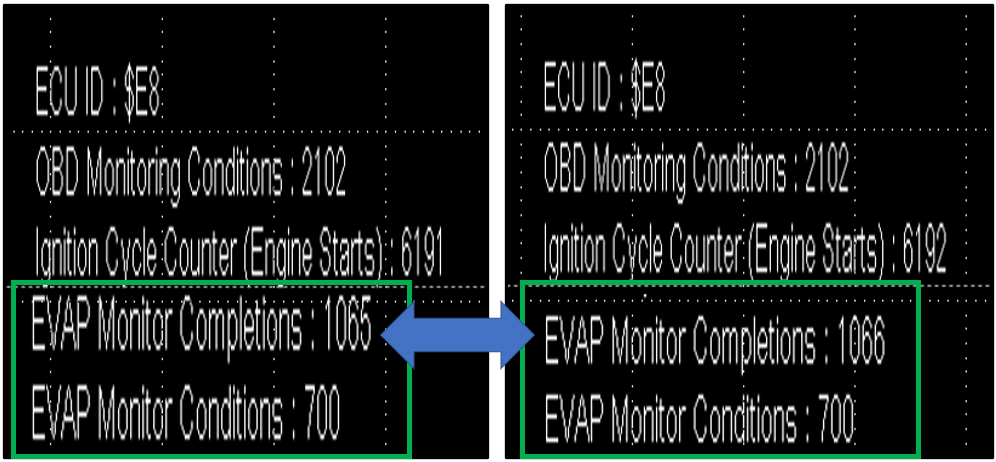
The following capture shows the completions for the O2 and EGR increments during many OEM trips that did not meet the criteria of the CARB trip. This could happen for the following reasons:
- The vehicle is in excellent working order, and the enable criteria are easily met, so readiness flag monitor tests are completed more frequently without meeting the requirements for a CARB trip.
- The vehicle could be in an Exponentially Weighted Moving Average (EWMA) MODE that requires multiple trips. During these trips, the Numerator will increment when the required monitor test runs long enough to detect a Pass/Fail.
Why didn’t the Denominator increment? An example would be starting the vehicle and immediately accelerating to 55mph while cruising the O2/AFS and CAT monitor test run. The technician immediately stopped and shut off the vehicle after five minutes with only four minutes above 25 mph and no thirty-second continuous idle period. Did this trip meet the definition of a CARB Trip? The answer is No. Look back at the criteria for a CARB trip.
What do these readings tell you about your ability to run these monitor tests? The ratios are well over one, indicating that their readiness flags should be easy to flip to Complete.

The following was captured from Ford OBDII Reference Data for Gasoline or Hybrid vehicles to show what DTC(s) will increment the Numerator. If this specific DTC test runs long enough to determine if the system or component could fail, the Numerator will increment. These DTCs are also considered a "Once Per Trip" monitor test. It should be typical of other manufacturers.
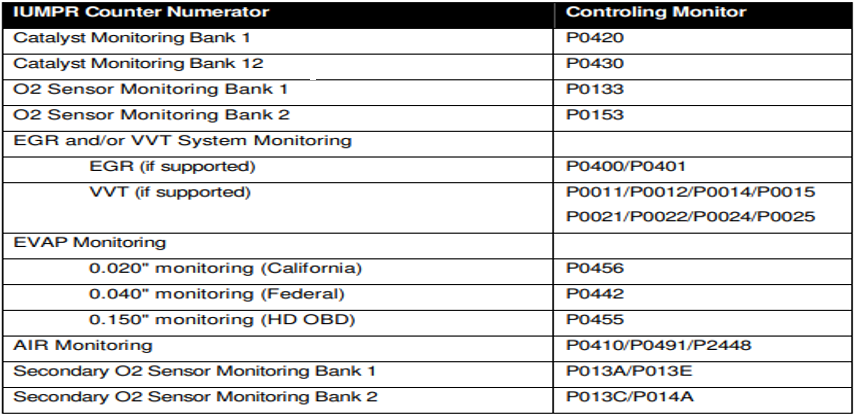
Each DTC relates to an individual monitor test. Multiple monitor tests can pass, and the readiness flag remains Not Complete. The following capture shows all the O2 sensor DTCs available on one vehicle. The "Once Per Trip" DTCs highlighted in Green are the DTCs responsible for flipping the readiness flag to complete.
Learn to quickly scan the MODE $06 MIDs related to pre-and post-oxygen sensors. If any of the TIDs report a Test Result of 0, that is most likely the blocker preventing the readiness flag from flipping to complete. This video demonstrates the technician scanning MODE $06 TIDs because the O2 Sensor flag is incomplete. In this case, it cannot be said that the monitor would not run; many monitor tests have run, but the monitor test required to flip the flag has not run yet.
In this next video, MID $01 and TID $85, shown in the previous video, are now run and passed. The readiness flag is now Complete.
MORE CONTENT TO BE ADDED; PLEASE CHECK BACK!

